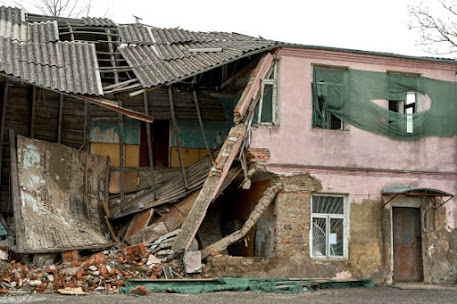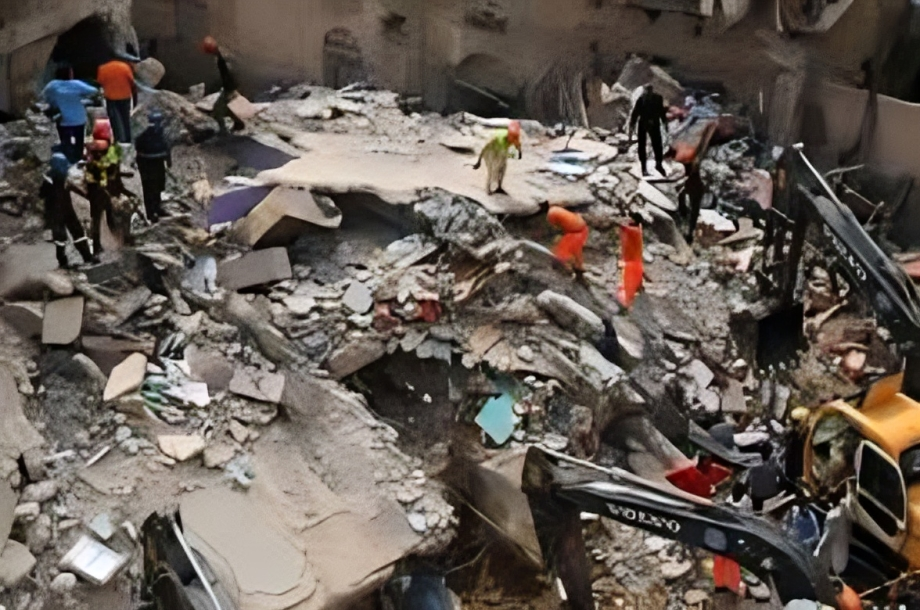Karachi Building Collapse has claimed the lives of 12 people in Lyari’s Baghdadi area as a six-storey residential structure came crashing down, triggering panic and rescue operations through the night. According to ARY News, the tragic Karachi Building Collapse has left dozens injured and many feared still trapped under the debris.
The Karachi Building Collapse took place late at night, and rescue officials confirmed that three more bodies were recovered early Saturday, raising the death toll to 12. Among the deceased were women and children, and the number may rise as search and recovery continue.
20 Still Trapped Under Rubble, 9 Rescued With Injuries
As rescue efforts intensified following the Karachi Building Collapse, nine injured individuals were pulled out from the rubble, including five women. These victims are currently receiving medical care at local hospitals, including the SMBB Trauma Centre. Out of the injured, six have been discharged after treatment, while three remain under observation.
Karachi Mayor Barrister Murtaza Wahab stated that about 20 people are believed to still be trapped beneath the debris. He confirmed that 19 individuals had been rescued in total since the Karachi Building Collapse occurred.
Commissioner Blames Residents for Karachi Building Collapse
In a controversial statement, Karachi Commissioner Hassan Naqvi placed partial blame for the Karachi Building Collapse on the residents who continued to live in a building previously declared unsafe. Visiting the site 13 hours after the incident, the Commissioner stated that the Sindh Building Control Authority (SBCA) had issued notices for evacuation long ago.

“The administration has no desire to forcibly evict residents, but safety must be prioritized,” said Naqvi, urging the public to heed structural warnings to avoid future tragedies like the Karachi Building Collapse.
SBCA Claims Prior Warnings; Locals Dispute
According to SBCA officials, the building involved in the Karachi Building Collapse had long been marked “dangerous.” They claimed that several enforcement actions had been taken, and multiple notices were issued instructing residents to vacate the premises. However, local residents strongly deny these claims, stating that they were never officially warned.
The Karachi Building Collapse has also damaged an adjacent structure, leading authorities to begin assessments of nearby buildings to prevent further mishaps.
Unsafe Buildings in Karachi: A Growing Concern
The Karachi Building Collapse has once again brought attention to the broader issue of building safety in the city. The SBCA has listed at least 578 buildings in Karachi as structurally unsafe, with the highest concentration of these structures located in District South. The Lyari collapse is a grim reminder of the potential dangers if these concerns go unaddressed.
Despite repeated tragedies, many of Karachi’s older neighborhoods continue to house thousands in vulnerable buildings. Following the Karachi Building Collapse, questions are being raised about the enforcement of safety regulations and the transparency of the SBCA’s eviction efforts.
Public Response and Continued Rescue Efforts
Emergency teams, including Chhipa Welfare and other volunteer groups, have been working tirelessly since the Karachi Building Collapse to rescue trapped residents. Inflatable equipment and excavation tools are being used to dig through the rubble as families anxiously wait nearby.
The Mayor has promised that no effort will be spared in continuing rescue operations and that those responsible for negligence leading to the Karachi Building Collapse will be held accountable after the investigation concludes.
Karachi Building Collapse a Wake-Up Call
The Karachi Building Collapse has become a tragic symbol of urban negligence and regulatory failure. With 12 confirmed dead, dozens injured, and hundreds of unsafe buildings still standing, authorities face mounting pressure to act swiftly and decisively.
As search and rescue efforts continue, the victims of the Karachi Building Collapse remain at the heart of a growing call for reform, accountability, and preventative action to avoid future disasters.
Supreme Court Challenge on Bihar Voter List Revision

